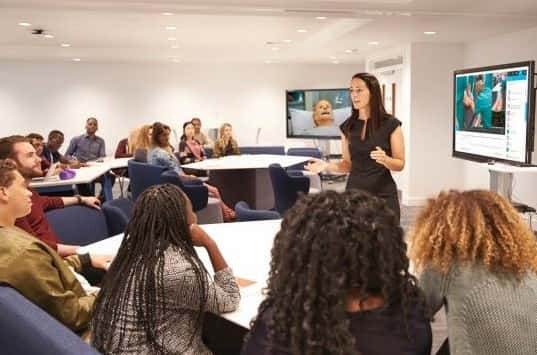Teaching with Data: Actionable Insights for Better Education


Go to any message board or internet forum for healthcare workers and a common theme emerges – A plurality of new nurses overwhelmed with their new professions1. Whether it’s due to anxiety about their competency and/or the demands of the job, there is disillusion and career reconsideration.
But why?
Is it the curriculum? This seems doubtful.
If what students were learning was the problem, we would see a full-scale industry push back. Not only from virtually every nurse, but from the hospitals and medical facilities that were employing them.
In consideration of the nursing educational landscape, a challenge that is ever-present in schools is both how students are learning and how that knowledge is being imparted to them2.
In a standard learning environment, think of a lecture hall, students are taught through lectures and hands-on practice and assessed through tests and quizzes with occasional instructor observation. But this falls short for so many as it is a control on what they know, not how they are prepared to implement it in comparison to simulation-based training3.
There are no data checks on if they’re prepared for the realities of the occupation.
Quizzes, prone to grade inflation4, are not an optimal means for determining the effectiveness of a learner’s communication within a team, particularly dealing within a hierarchy.
Even group assignments aren’t adequate at teaching aspiring medical professionals how to take on a leadership role. To further education and preparation, instruction must be imbued with resiliency to not only survive but thrive within the healthcare system.
But, to do this, requires a deeper understanding of students’ comprehension and progress. The data is there and, when isolated and properly analyzed, provides profound insights.
Running standardized simulations for learners both produces data for actionable insights and reduces inequity and unconscious bias in education5.
Utilizing a software which can both aggregate and provide analytics is vital for finding answers to the overarching questions, in individual, Peer-to-Peer, and group settings, which are the biggest challenges in preparation6:
Are there challenges or pain points common throughout the cohort?
Where do most breakdowns in communication/continuity of care occur?
Do students continuously struggle to master a specific skill or aspect of the job?
As these answers start to crystalize, faculty are empowered to take specific courses of action to meet the learning obstacles facing their students. By utilizing peer-to-peer methodology to pair students with dissimilar learning outcomes helps both students. Each member of the pair gains a new perspective from someone on their level as well as reinforcing their own skills by having to impart knowledge on someone else7.
Not only does this provide an additional learning pathway, but it also saves the faculty time. Freed from direct instruction, instructors can further explore learning outcomes from the simulations as well as observe soft skills in their students. With this increased overview, educators have the ability to reach more students without any drop-off in education delivery.
Over time, using the data from various classes provides even more advantages. Evaluating cohorts will reveal patterns such as slow onboarding periods and rapid growth points. Identifying these respective intervals is beneficial in influencing future curriculum delivery.
For example, over several class cycles, it’s revealed that students show quick adaption of methodology from Chapter 2 but take longer with elements in Chapter 6. Educators accommodate by planning their syllabus with a shorter Chapter 2 and longer Chapter 6 deliveries, respectively.
At the institutional administration level, these insights help with assigning educators to cohorts better suited to their teaching methods8. For example, Professor A’s students tend to excel in the latter stages of their training but struggle early on. It would be most favorable for all parties if they were most responsible for instruction with students at the latter stages.
As with learner insights, having a software to properly provide analytics is vital with this process. However, just recording and doing the math manually reveals the same data if there are standardized practices for assessing all parties involved.
In action:
At IMSH 2022, we sat down with Rosemary Samia from the University of Massachusetts Boston to discuss the importance of data in education.